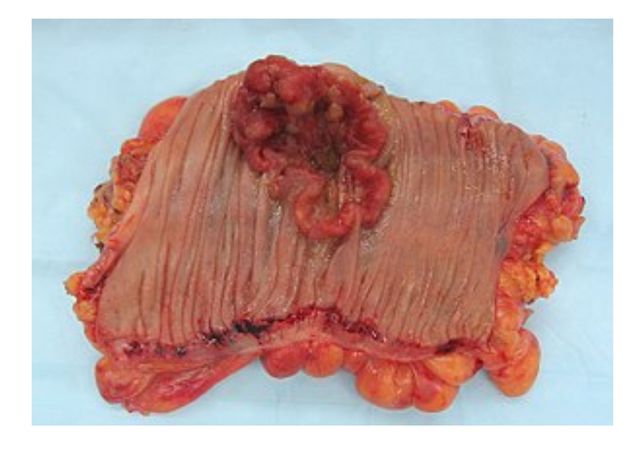Patient summary
If you start reading about cancer, you will invariably come across the term neoplasm or tumors. If explained most simply, the neoplasm is an abnormal collection of cells causing a lump anywhere in the body. However, pathologists ( doctors who see the fine details of the cells) make the most accurate diagnoses of the neoplasms after seeing through the microscope.
Not all neoplasms are cancer. Neoplasms that are cancers are called malignant neoplasms. Malignant neoplasms can spread into the rest of the body, especially to the lungs, liver, and bones. This process is called metastasis.
Neoplasms which are not cancers, are called benign neoplasm. These types of tumors can grow bigger but won’t spread to the other sites. Some of the benign neoplasms turn into cancers over time. These are called precancerous lesions.
Benign neoplasms can be left alone if they are not causing any problem. However, malignant neoplasms and precancerous lesions should be treated when possible.
For more advanced details, read the rest of the article.
What is a neoplasm
Defined by Willis, “a tumor /Neoplasm is an abnormal mass of tissue,the growth of which exceed and uncoordinated with that of the normal tissue,and persists in the same excessive manner after cessation of the stimuli which evoke the change.”
Put simply; it is a mass of tissue that is caused by abnormal growth of cells which are resembled normal cells but are arranged haphazardly. The process may start due to an external stimulus; however, it continues to grow even when the stimulus is taken away.
Neoplasms may arise from 2 basic types of body cells. Mesenchymal cells and Epithelial cells. And they can occur anywhere in the body.
Depending on the behavior and the appearance in the microscope, neoplasms can be benign neoplasms or malignant neoplasms.
Types of Neoplasms
Depending on the appearance in the microscope and tumor behavior these are categorised in to two types.The malignant neoplasms and benign neoplasms
Benign neoplasms
This is the less harmful version of neoplasms. These are usually slow-growing tumors and have an expansile type of growth. The growth of benign neoplasms may stop after reaching a certain size. They will never spread to other sites (metastasize) and generally remain small.
Microscopically, they are well-differentiated ( similar to the cells of origin) and have a well-formed stroma ( surrounding tissue structure)and few mitoses. ( evidence of rapid cell division).
Benign neoplasms can be asymptomatic and found incidentally. Other cause symptoms and signs depending on the site and due to the various substances they produce
Ex appears as a lump, Blockage. Bleeding
Fibroadenoma of the breast, Haemangimo,and papiloma are few examples for benign tumors
Malignant Neoplasms
Malignant neoplasms are a potentially life-threatening version of the tumors. Cancer is used as a blanket term for all malignant neoplasms. They grow rapidly and enlarge by invading too nearby tissues rather than by expansion. When advanced, they metastasize (spread) to distant sites like the lung, liver, and bone.
Microscopically they can vary from well-differentiated to poorly differentiated or maybe totally undifferentiated. Well- differentiate cancers have a better prognosis compared to others.
Malignant tumors arising from epithelial cells are called carcinomas, whereas malignant tumors arising from mesenchymal cells are called sarcomas.
Malignant neoplasms present with symptoms and signs related to the local spread metastasis or with paraneoplastic syndromes.
Breast cancers , bowel cancers, Malignant neuroendocrine tumors ,thyroid cancers are some examples of malignant neoplasm.
Diagnosis of Neoplasms
Some tumors were found incidentally ( Found while investigating for other diseases whereas others detected in screening programs or present with symptoms and signs. Type of the investigations to find neoplasm depend on how the patient present to the Doctor. Commonly used investigations include. Endoscopies. CT scans, MRI scans, Ultrasound scans, Pet scans, X-rays, and various blood tests.
How to treat Neoplasms
Malignant neoplasms are treated aggressively, whereas benign neoplasms are treated selectively. There are different treatment modalities available. Sometimes multiple treatment modalities are used in combination. Individual patient treatment depends on the type of neoplasm, site of the tumor, stage and grade, patients’ fitness patients’ choice, and availability of facilities. Treatment decisions are usually made in MDT (Multidisciplinary team meeting).
Surgery – Surgery is the mainstay of treatment for most cancers. Surgery may be done with curative intent ( To achieve cure) or palliative intent ( To relieve symptoms)
Chemotherapy – These are medications given Orally or as injections. It may be used as primary treatment or adjuvant ( After primary treatment ), or neoadjuvant (before primary treatment).
Radiotherapy – In radiotherapy, high doses of X-rays are used to kill cancer cells.
Hormonal therapy – Some cancers like breast cancer has hormonal receptors. These are treated by blocking these receptors.
Immunotherapy – These therapies support controlling cancer by boosting the immune system.


Pingback: Parastomal Hernia - My Blog
Pingback: Enucleation - What does it mean ? - My Blog